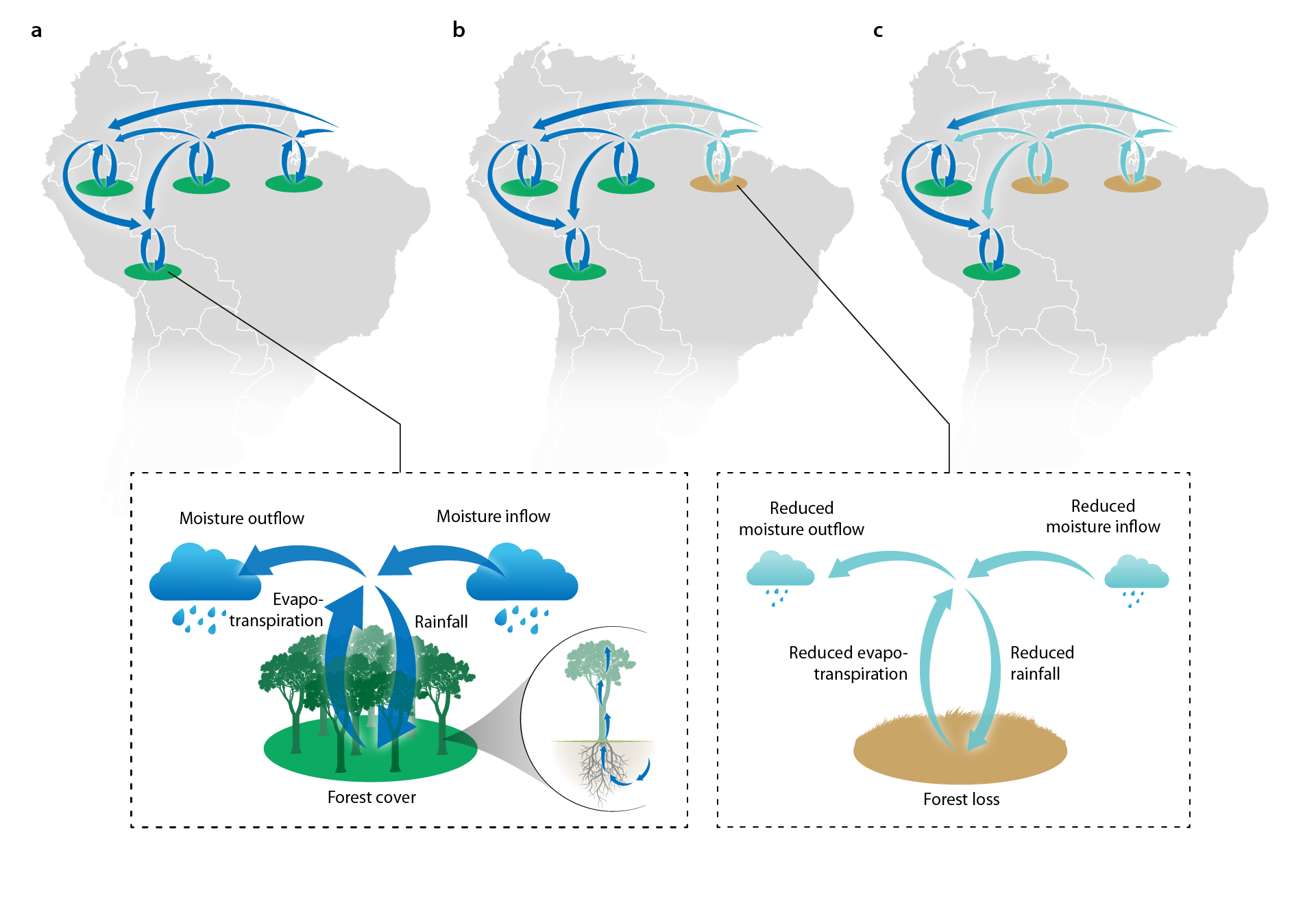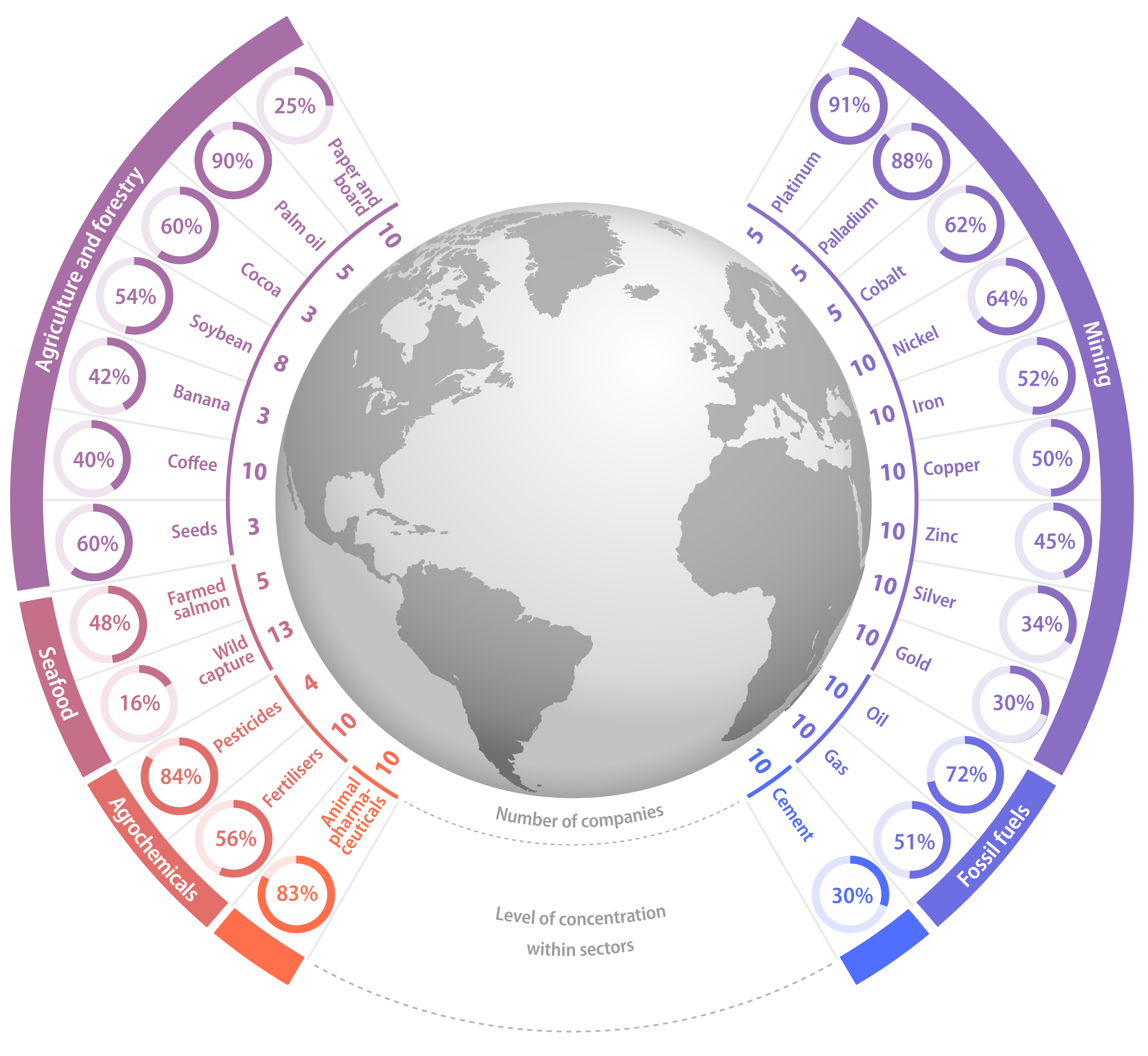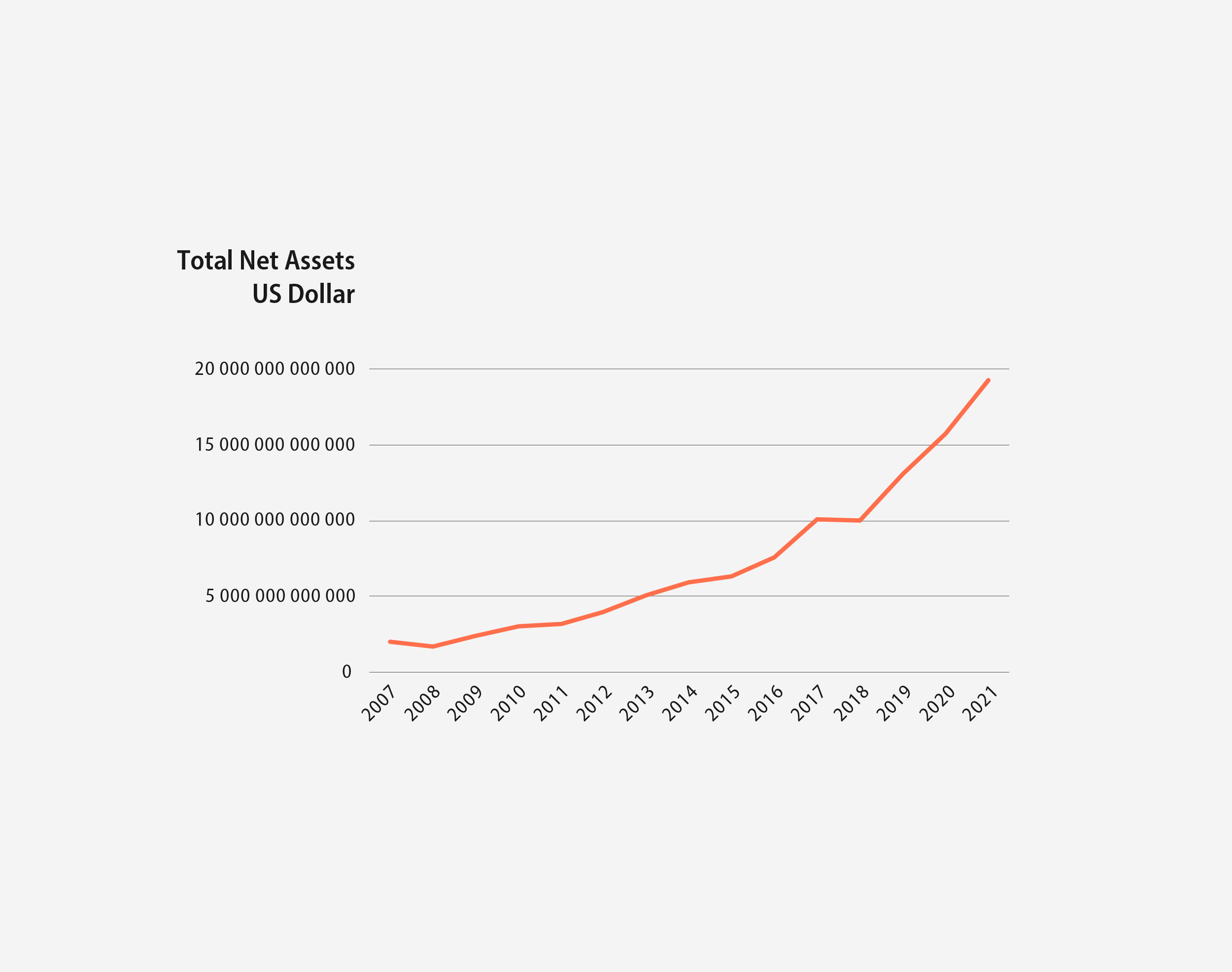Chapter 5
How deforestation and climate change could push the Amazon to a tipping point
David Armstrong McKay
The Amazon rainforest is one of the most biodiverse places on Earth, fitting around half of the planet’s remaining rainforest and 10% of known species (WWF, 2010) in only 1% of the Earth’s surface. Around 17% of the forest has been lost since 1970 (SPA, 2021) and another 17% degraded, mostly from clearance for cattle ranching, soy plantations, logging, and mining. This damage is threatening many rare species and is pressuring the Indigenous peoples and local communities who depend on the forest (Conceição et al., 2021).
As well as direct loss, researchers are also worried that beyond a certain level of deforestation or warming the rainforest could start to retreat on its own, even if deforestation or warming stopped – a tipping point (Armstrong McKay, 2019) known as ‘Amazon dieback’.
This could happen because the Amazon rainforest is partly self-sustaining (Looms, 2017). A rainforest can only grow above a minimum rainfall level, but the Amazon also makes around a third (Staal et al. 2018) to a half (SPA, 2021) of its own rainfall by recycling moisture (Staal et al. 2020) from the Atlantic. Winds transport this moisture further inland in a great ‘atmospheric river’ where it can be recycled again and again, expanding the area wet enough for rainforest to grow. Moisture recycling also acts like a giant ‘air-conditioner‘, allowing the forest to cool itself (SPA, 2021).
If enough forest is lost due to drought or deforestation in key rain-producing regions though, less rain is recycled, and areas downwind get drier. The Amazon is also seeing more frequent droughts (SPA, 2021), with water levels on the Rio Negro recently hitting record lows (Reuters, 2023) due to this year’s El Niño on top of long-term climate change-induced drying. These droughts make wildfires – to which rainforest is particularly vulnerable – more likely. If this pushes these downwind areas below the rainfall level needed for rainforest to survive it could lead to further forest loss, even less moisture recycling, and dieback could cascade through vulnerable parts of the Amazon.
When could dieback happen?
An estimated 40% of the Amazon (Staal et al., 2020) – mostly in the drier south and east – can tip from a wet rainforest state to a drier, more open degraded forest or savanna-like state (Hirota et al., 2011). Each state sustains itself through feedbacks (such as moisture recycling for rainforest or wildfires for open state), and can tip from one state to the other when pushed beyond climate or forest loss thresholds.
In 2016 Brazilian climate scientist Carlos Nobre led a paper that estimated dieback could be triggered around either 40% deforestation or 3-4°C of global warming (Nobre et al., 2016; Nobre and Flatow, 2019). This matches other studies that found the risk of dieback grows above 2°C (Boulton et al., 2013) and becomes likely beyond around 3.5°C (Armstrong McKay et al., 2022), and would take several decades to a century to fully play out. However, in 2018 Nobre and ecologist Thomas Lovejoy suggested that deforestation-induced tipping could start at as low as 20-25% due to interactions with warming-induced droughts not fully captured by their models, which is worryingly close to the current 17% deforestation level (Lovejoy and Nobre, 2018). Localized dieback may have even started in a few places (Quintanilla et al. 2022), but has not yet spread across larger regions.
There is some uncertainty around model projections and driver interactions though, so these lower deforestation thresholds are based on expert judgement. The IPCC’s latest report gave a low likelihood for Amazon dieback this century as it features in only some leading climate models, but project biome large shifts by 4°C of warming (Canadell et al. 2021). Some recent models suggest the forest may be more resilient to climate change (Cox, 2020) than first feared due to high adaptability (allowing it to survive past natural dry periods), and the Scientific Panel for the Amazon found a basin-wide threshold was too uncertain to identify (SPA, 2021). Key feedbacks like nutrient limitations or wildfires are not yet well represented in many models though, so these model projections may be over-stable thus underestimating the risks of a transgression of a threshold.
Given this, 20-25% deforestation acts as a provisional precautionary threshold that is wise to stay within even if the actual tipping point threshold turns out to be higher, and the Science Panel for the Amazon has called for an immediate moratorium on deforestation in tipping-prone regions (Rodrigues, 2021).
Figure 1. The Amazon Rainforest’s Tipping Dynamics. a) Wind from the Atlantic carries moisture westwards over the Amazon, where it falls as rain and is mostly returned to the atmosphere through trees pumping water up and evaporating from leaves (‘evapotranspiration’), making the moisture available to move further inland and fall as rain again. b) If drought (or deforestation)drives a shift to a state with fewer trees, this reduces the amount of moisture recycled and therefore the amount of moisture and rainfall downwind too. c) If areas downwind are pushed passed the minimum viable rainfall level for rainforest they can tip into a degraded state too, creating a “dieback” cascade spreading through vulnerable areas. Figure based on Zemp et al. (2017).
What’s at stake
The Amazon rainforest stores around 150 to 200 billion tons (SPA, 2021) of carbon in its plants and soils, and over the last few decades has absorbed 5-10% of yearly human CO2 emissions from the atmosphere (Cox, 2020). However, the capacity of this ‘carbon sink’ peaked in the 1990s and is now falling, and combined with degradation the Amazon likely now emits more CO₂ than it absorbs (Gatti et al. 2022). This shift is not a tipping point in itself, but means the Amazon has started to amplify rather than counter global warming.
If wide-scale dieback were to start, then it would lock in far more CO2 release over the coming decades. Dieback in the dry south and east could release around 30 billion tons of carbon (McKay, 2022), which is the equivalent of around 3 years of current human emissions, and along with biogeophysical feedbacks could add 0.1°C to global warming over the next century. Even more carbon would be at risk if higher warming makes more forest vulnerable to dieback (Staal et al., 2020). Regional impacts would include extra local warming of up to 1°C as the forest’s self-cooling ability is reduced, and reduced rainfall across the Amazon and the Southern Cone (See Chapter 6). Thankfully, the planet’s oxygen supply is not at risk though, as it was built up over millions of years (Zimmer, 2019).
Action now is critical for protecting what remains of the Amazon rainforest. Keeping to the Paris Agreement goal of limiting warming to 1.5°C (or well below 2°C) would help to minimize the chance of Amazon dieback, requiring the rapid phase out of fossil fuels and the transformation of global food systems. Restoring degraded or lost forest and shifting to agroforestry can also help restore moisture recycling and recapture some lost carbon, while legally protecting intact forest and empowering Indigenous Peoples and local communities deters deforestation (Boadle and Shumaker, 2019). Together these would help improve Amazonian resilience to climate change, but ultimately the Amazon is not safe until both greenhouse gas emissions and deforestation stop.
References
Boadle, A. and Sumaker, L. (2021). Protecting indigenous people key to saving Amazon, say environmentalists. Reuters. Available at: https://www.reuters.com/business/environment/reuters-impact-protecting-indigenous-people-key-saving-amazon-say-2021-10-04/. [Accessed 17.11.2023]
Boulton, C.A., Good, P., Lenton, T.M. (2013). Early warning signals of simulated Amazon rainforest dieback. Theor Ecol. 6:373-384. DOI 10.1007/s12080-013-0191-7.
Canadell, J.G., P.M.S. Monteiro, M.H. Costa, L. Cotrim da Cunha, P.M. Cox, A.V. Eliseev, S. Henson, M. Ishii, S. Jaccard, C. Koven, A. Lohila, P.K. Patra, S. Piao, J. Rogelj, S. Syampungani, S. Zaehle, and K. Zickfeld, 2021: Global Carbon and other Biogeochemical Cycles and Feedbacks. In Climate Change 2021: The Physical Science Basis. Contribution of Working Group I to the Sixth Assessment Report of the Intergovernmental Panel on Climate Change [Masson-Delmotte, V., P. Zhai, A. Pirani, S.L. Connors, C. Péan, S. Berger, N. Caud, Y. Chen, L. Goldfarb, M.I. Gomis, M. Huang, K. Leitzell, E. Lonnoy, J.B.R. Matthews, T.K. Maycock, T. Waterfield, O. Yelekçi, R. Yu, and B. Zhou (eds.)]. Cambridge University Press, Cambridge, United Kingdom and New York, NY, USA, pp. 673–816, doi: 10.1017/9781009157896.007. https://www.ipcc.ch/report/ar6/wg1/chapter/chapter-5/
Carrington, D. (2021). Amazon rainforest now emitting more CO2 than it absorbs. The Guardian. Available at: https://www.theguardian.com/environment/2021/jul/14/amazon-rainforest-now-emitting-more-co2-than-it-absorbs. [Accessed 17.11.2023]
Conceição, K.V., Chaves, M.E.D., Picoli, M.C.A., Sánchez, A.H., Soares, A.R., Mataveli, G.A.V., Silva, D.E., Costa, J.S., Camara, G. (2021). Government policies endanger the indigenous peoples of the Brazilian Amazon. Land use policy 108: 105663.
Cox, P. (2020). Could climate change and deforestation spark Amazon ‘dieback’?. Carbon Brief. Available at: https://www.carbonbrief.org/guest-post-could-climate-change-and-deforestation-spark-amazon-dieback/
Downie, A. (2022). Large parts of Amazon may never recover, major study says. The Guardian. Available at: https://www.theguardian.com/environment/2022/sep/05/large-parts-of-amazon-may-never-recover-major-study-says. [Accessed 17.11.2023]
Gatti et al (2022) Nature 595, pages 388–393 https://www.nature.com/articles/s41586-021-03629-6
Hirota, M., Holmgren, M., Van Nes, E.H., Scheffer, M. (2011). Global Resilience of Tropical Forest and Savanna to Critical Transitions. Science. 334: 232-235. DOI:10.1126/science.1210657.
Looms, I. (2017). Trees in the Amazon make their own rain. Science. doi:10.1126/science.aan7209.
Lovejoy, T.E., and Nobre, C. (2018). Amazon tipping point. Science Advances. 4(2).
McKay, D.A. (2019). What are Climate Tipping Points?. Available at: https://climatetippingpoints.info/what-are-climate-tipping-points/. [Accessed 17.11.2023]
McKay, D.A., Staal, A., Abrams, J.F., Winkelmann, R., Sakschewski, B., Loriani, S., Fetzer, I., Cornell, S.E., Röckstrom, J., Lenton, T.M. (2022). Exceeding 1.5°C global warming could trigger multiple climate tipping points. Science. 377(6611): eabn7950. DOI:10.1126/science.abn7950.
Nobre, C.A., Sampaio, G., Borma, L.S., Castilla-Rubio, J.C., Silva, J.S., Cardoso, M. (2016). Land-use and climate change risks in the Amazon and the need of a novel sustainable development paradigm. PNAS. 113(39): 10759-10768. https://doi.org/10.1073/pnas.1605516113.
Nobre, C.A. and Flatow, I. (2019). A Spike In Tree Loss Puts The Amazon Rainforest At Risk. Science Friday. Available at: https://www.sciencefriday.com/segments/tree-loss-amazon-rainforest/. [Accessed 17.11.2023]
Quintanilla, Marlene, Alicia Guzmán León, Carmen Josse. 2022.The Amazon against the clock: a Regional Assessment on Where and How to protect 80% by 2025 https://amazonia80x2025.earth/amazonia-against-the-clock/
Reuters. (2023). Amazon rivers fall to lowest levels in 121 years amid a severe drought. CNN. Available at: https://edition.cnn.com/2023/10/17/americas/amazon-river-lowest-levels-drought-climate-intl/index.html. [Accessed 17.11.2023]
Rodrigues, M. (2021). New Report Puts the Amazon Rain Forest on the Main Stage at COP26. Available at: https://eos.org/articles/new-report-puts-the-amazon-rain-forest-on-the-main-stage-at-cop26. [Accessed 17.11.2023]
Science Panel for the Amazon (SPA). (2021). Executive Summary of the Amazon Assessment Report 2021. C. Nobre, A. Encalada, E. Anderson, F.H. Roca Alcazar, M. Bustamante, C. Mena, M. Peña-Claros, G. Poveda, J.P. Rodriguez, S. Saleska, S. Trumbore, A.L. Val, L. Villa Nova, R. Abramovay, A. Alencar, A.C.R. Alzza, D. Armenteras, P. Artaxo, S. Athayde, H.T. Barretto Filho, J. Barlow, E. Berenguer, F. Bortolotto, F.A. Costa, M.H. Costa, N. Cuvi, P.M. Fearnside, J. Ferreira, B.M. Flores, S. Frieri, L.V. Gatti, J.M. Guayasamin, S. Hecht, M. Hirota, C. Hoorn, C. Josse, D.M. Lapola, C. Larrea, D.M. Larrea-Alcazar, Z. Lehm Ardaya, Y. Malhi, J.A. Marengo, M.R. Moraes, P. Moutinho, M.R. Murmis, E.G. Neves, B. Paez, L. Painter, A. Ramos, M.C. Rosero-Peña, M. Schmink, P. Sist, H. ter Steege, P. Val, H. van der Voort, M. Varese, Zapata-Ríos (eds.) United Nations Sustainable Development Solutions Network, New York, USA. 48 pages.
Staal, A., Tuinenburg, O.A., Bosmans, J.H., Holmgren, M., van Nes E.H., Scheffer, M., Zemp, D.C., Dekker, S.C. (2018). Forest-rainfall cascades buffer against drought across the Amazon. Nature Climate Change. 8: 539-543.
Staal, A., Fetzer, I., Wang-Erlandsson, L., Bosmans, J.H.C., Dekker, S.C., van Nes, E.H., Röckstrom, J., Tuinenburg, O.A. (2020). Hysteresis of tropical forests in the 21st century. Nature Communications. 11: 4978. https://doi.org/10.1038/s41467-020-18728-7.
Welch, C. (2021). First study of all Amazon greenhouse gases suggests the damaged forest is now worsening climate change. The National Geographic. Available at: https://www.nationalgeographic.com/environment/article/amazon-rainforest-now-appears-to-be-contributing-to-climate-change. [Accessed 17.11.2023]
WWF (2010). Amazing Discoveries in the Amazon: New Species Found Every 3 Days Over Last Decade. Available at: https://wwf.panda.org/?196057/Amazing-Discoveries-in-the-Amazon-New-Species-Found-Every-Three-Days-Over-Last-Decade. [Accessed 17.11.2023]
WWF (2022) Living Planet Report 2022 – Building a nature positive society. Almond, R.E.A., Grooten, M., Juffe Bignoli, D. & Petersen, T. (Eds). WWF, Gland, Switzerland. Available at: https://wwflpr.awsassets.panda.org/downloads/lpr_2022_full_report.pdf. [Accessed 17.11.2023]
Zimmer, K. (2019). Why the Amazon doesn’t really produce 20% of the world’s oxygen. The National Geographic. Available at: https://www.nationalgeographic.com/environment/article/why-amazon-doesnt-produce-20-percent-worlds-oxygen. [Accessed 17.11.2023]




